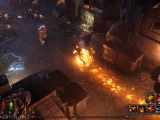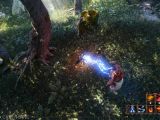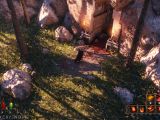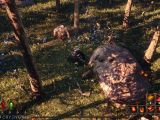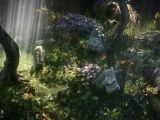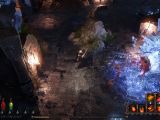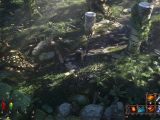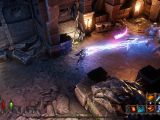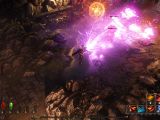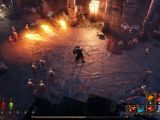Umbra is a new gorgeous hack'n'slash action RPG developed by a studio called SolarFall Games, and it will be available for the Linux platform. The developers have been kind enough to answer a few questions and give the gaming community more details about this upcoming triple-A title.
We talked about Umbra a couple of weeks ago, right when the project started its Kickstarter campaign. The game seems to look too good to be real and the features, at least on paper, seem to surpass pretty much anything that has been done until now in this genre. It will be a while until we get to play it or at least try the first Alpha, but players should already be enthusiastic about this.
Umbra will be a triple-A title for Linux
Before getting to the interview with Daniel Dolui from SolarFall Games, let's summarize Umbra. It's a hack'n'slash action-RPG that takes place in a single open-world level. The developers have promised a unique progression model that makes classes irrelevant, a semi-procedural item system, superb graphics delivered by CRYENGINE, an epic story, destructible environments, and a great AI system. And all of these are just covering a small portion of what the game will actually offer.
Softpedia: You describe Umbra as an isometric open-world action-RPG, which seems to encompass quite a few concepts that gamers love, but do you think that there is a real future for isometric games in, say, 5 years from now? What were the reasons behind the decision to go with this type of perspective?
SolarFall Games: Isometric games are a very popular type of game today and should remain as it is in the future. If you check the amount of players on Diablo and Path of Exile only, it is clear that there is an audience for these kinds of game on both PC and console.
This perspective is actually completely related to gameplay. As a big Hack’n’Slash player, I wanted to create a game with my own ideas in it, and keeping the classical top down view is part of this game style.
“The main focus of Umbra is the character building freedom”
S: Developers often build games they would want to play themselves, and that's especially true for independent studios. Assuming that’s the case with Umbra, how will it differ from the other isometric action games you've played so far?
SG: Umbra differs in many ways from other Hack’n’Slash titles. The main focus of Umbra is the character building freedom and possibilities within. When we built the game, we chose to pick what we liked from other games to create our basis – foundation if you will, and then we added our own feature on top of that.
So our character building is, in the beginning, close to the Elder Scrolls series - no class restrictions, you can pick any weapon, armor or skill and mix them as you want. Three resources are implemented in the game – Rage, Stamina and Manage – to balance the gameplay.
The game also features a really nice mechanic called “Elemental Effect Interaction” managing the interaction between Lightning, Water, Fire and Ice. These interactions work not only between your spells but also with the environment and allow for a lot of different combinations! If you cast a Lightning strike in water, lightning will spread and maybe stun all nearby enemies. Fire will spread in a dry area, and will unfreeze frozen enemies, leaving them in a wet state, ideal time to stun them with a lightning strike.
Also, our AI system, Kythera AI, can adapt to any physical change in the world, meaning that we can easily design destructive area and make them work nicely without any extensive work, WTE or script, so it offers us a lot of possibilities for players to play with physical object and destroyable elements; for example, using telekinetic spells, or fighting on moving platforms.
Another thing that makes our game really different is the Apocalyptic Form. It is an ultimate power that every player will have and will allow them to shape-shift into a personalized avatar of destruction. Apocalyptic Form is built from up to three “Apocalyptic” Upgrades, and these Upgrades are unlocked during your game, according to the way you play.
The Upgrade not only grants you new powers but also changes your look! You will be able to gain Demon Wings and make huge leaps, have horns on our head to rush enemies and knock them down, gain a third arm to equip with a new weapon and so on. The upgrades are unlocked according to your playstyle meaning that if you use a lot of Fire skill, you may unlock an Upgrade turning your skin into fire, allowing you to heal from any Fire source, even from the enemy’s attack!
To end, the fact that the world of Umbra is open also fit well our crafting and housing system. You will need to collect resources to build your house, or to craft items.
Our crafting system relies on a unique and fun minigame requiring a lot of skills, and the housing system will allow you to showcase your looted items on mannequins or on weapon racks!
“Our open world aims to be about 4 kilometer square”
S: You’ve been talking about an open world game in which players can build their own homes, but just how open is it? How do you plan to deal with level progression?
SG: Our open world will allow you to go pretty much anywhere you want to go, as long as you can survive the threats you will face. Our open world aims to be about 4 kilometer square, with some selected randomly generated places in it, plus access to several ruins, cave and dungeon that will be fully randomly generated.
We aim to provide a rich and dense open world – in other third-person-view games featuring an open world, there is usually a lot of free space between points of interest. The third-person camera allows to see far away to create some empty places between other important one.
In Umbra, since we are using a top down camera, we only see about 30 meters around the character, so we need to have a very rich environment with plenty of points of interest to make sure the game remains interesting, so that’s how we are going to build the environment of the game.
“We could have a great working pipeline and amazing visual with CryEngine ”
S: You’re using CRYENGINE for the game, which is not something we see too often. Can you tell us why you chose it over one of the usual suspects, such Unreal Engine 4 or UNITY?
SG: The project started more than four years ago and I knew it would take a lot of time to develop. So basically, the first thing I had it mind was ”I need an engine that will look beautiful in 4 years,” and CryEngine 2 was great at the time. Plus I was pretty sure that Crytek will remain one of the leaders for graphic engines. Also, I already worked with the engine prior to Umbra and I knew how it could actually help me achieve my goals. The particle system was great and easy to use at the time, which is a very important thing for an action RPG and the game code already had several features I really needed, such as projectile or simple actor system. I just had to edit them to turn them into what I wanted them to be.
I can’t really talk to you about the other engines; I am pretty sure it is possible to achieve great result with them too. I had some experience with Unity, but in the end, as a programmer, I really like the clear way CryEngine code is written, and it was really easy for me to implement my features.
I knew from the start that with a good team, we could have a great working pipeline and amazing visual with CryEngine, and we worked that way. We are very happy with the results.
“Our work on Linux is basically to rebuild our game for the platform and run optimization tests”
S: Umbra will also be a Linux game, which is great news for the community. Are you planning to develop both the Windows and the Linux version at the same time or will it be ported at a later time?
SG: Thanks to CryEngine, we don’t have to bother with a lot with the technical side of the Linux port. Our work on Linux is basically to rebuild our game for the platform and run optimization tests. Thanks to that, we aim to have a similar release time frame for both platforms.
“The game will not limit itself to a certain amount of archetype to play with the associated items”
S: The game will also have semi-procedurally generated weaponry, which sounds really good in theory. How do you plan to avoid problems like the one in Diablo III, where all the high-end gear tends to be the same, with just some small changes in stats?
SG: That’s indeed an issue we are aware of, and we will try to make sure that it won’t happen in Umbra. This is done via several mechanics, including the one managing the Legendary Items in Umbra. Legendary items are usually looted with two parts in Umbra. You will get a unique weapon skin, and a socketable element already included in the Legendary item called “Soul Gem.” A Soul Gem carries a unique effect for the item, such as a skill modifier, an additional skill to use or any other awesome effect.
This socketable element can actually be removed – for a certain gold price – and set into another weapon.
That way, we hope players will be tempted to actually mix the effects of their weapons and pick various pieces of equipment to fit their need. Also, since Umbra allows a lot of possibilities on character building, there should be a lot of various items useful for many different builds. The game will not limit itself to a certain amount of archetype to play with the associated items.
“We plan to start a technical alpha around November-December 2015 ”
S: The launch date for Umbra is set to October 2016, which feels like a very long wait. Can you share some details about the current stage of the project and how much of it has been completed?
SG: A lot of work has been done so far, especially on the mechanics of the game and visual elements. We plan to start a technical alpha around November-December 2015, and the backers of the Kickstarter will have access to our current GDC Prototype build in a couple of months one or two month after the Kickstarter.
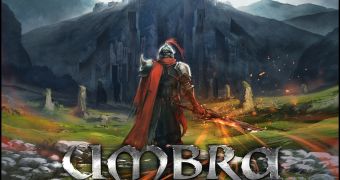
 14 DAY TRIAL //
14 DAY TRIAL // 

